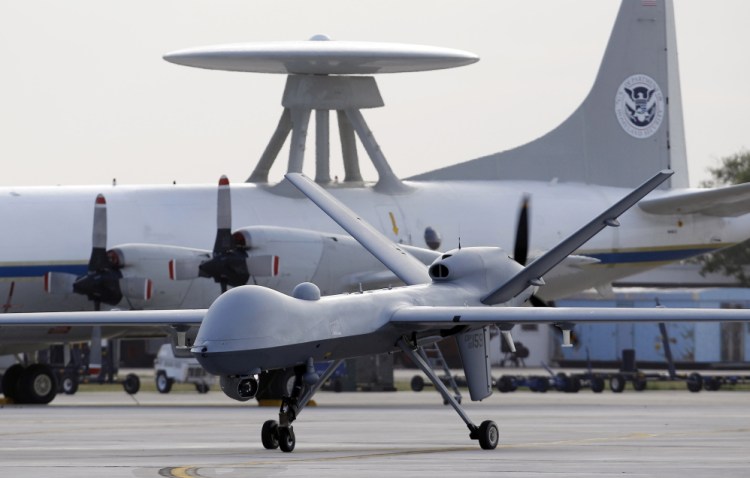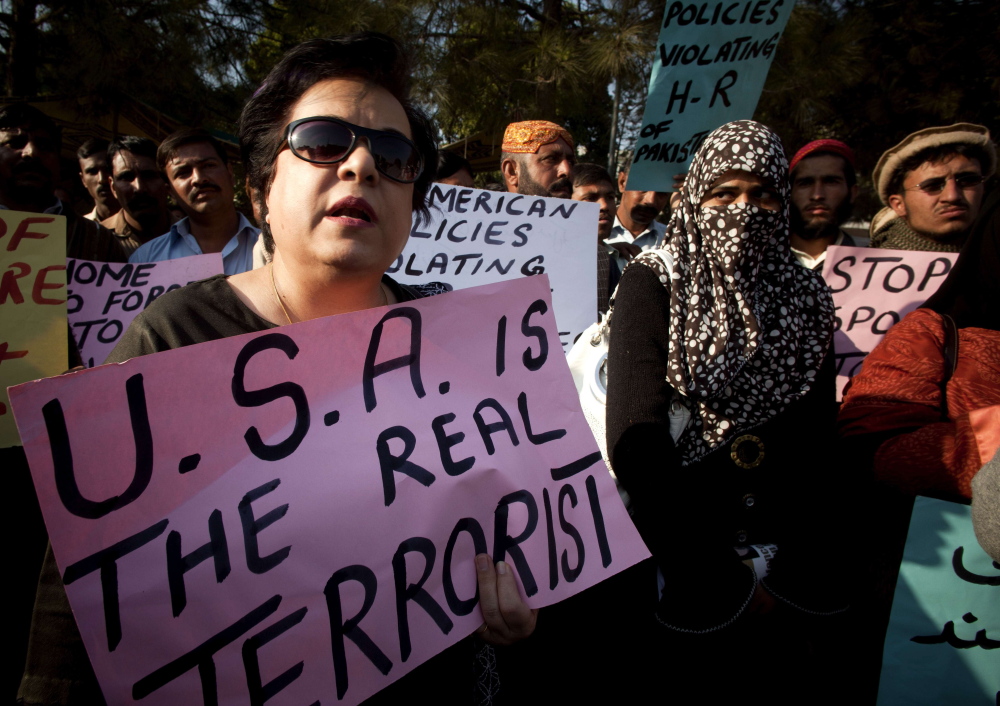WASHINGTON — After weeks of aerial surveillance, CIA analysts reached two conclusions about a compound to be targeted in a January drone strike: that it was used by al-Qaida militants, and, in the moment before it was hit, that it had exactly four occupants.
But as six bodies were removed from the rubble, the drone feeds that continued streaming back to CIA headquarters carried with them a new set of troubling questions, including who the other two victims were, and how the agency’s pre-strike assessments could have been so flawed.
In his grim statement on Thursday, President Obama described the deaths of two Western hostages held by al-Qaida as unfortunate but not necessarily a result of negligence. He cited the “fog of war” and said that preliminary assessments indicate the strike “was fully consistent with the guidelines under which we conduct counterterrorism efforts.”
But current and former U.S. counterterrorism officials said that Thursday’s disclosures undercut years of U.S. claims about the accuracy of the drone program and provided new ammunition for skeptics of administration policies that are supposed to require “near certainty” that no civilians will be harmed.
Despite Obama’s equanimity in public, officials said that his reaction behind closed doors was considerably harsher. Obama’s advisers have for years told him that “this would never happen, and now it did,” said a former senior U.S. counterterrorism official who spoke on the condition of anonymity. “It is going to be a big deal.”
The disclosures Thursday went beyond the deaths of the two hostages – Warren Weinstein, an American held by al-Qaida since 2011, and Giovanni Lo Porto, an Italian who was kidnapped in 2012.
The administration also revealed that Weinstein was one of three Americans killed in a pair of CIA drone strikes in Pakistan in January.
DISMAL STATISTICS
The others, Ahmed Farouq and Adam Gadahn, were members of al-Qaida. Even so, the CIA appears not to have known that the two men were present at the sites it targeted. As a result, the operations that killed them didn’t adhere to rules that Obama imposed, requiring a Justice Department review and other measures before Americans are targeted in counterterrorism operations overseas.
Their deaths, while not deemed civilian casualties, add to an increasingly dismal set of statistics on U.S. citizens. Since 2002, at least eight Americans have been killed in U.S. drone strikes in Pakistan and Yemen. Only one – Anwar al-Awlaki, a U.S.-born cleric later accused of serving as a senior al-Qaida operative in Yemen – was targeted intentionally.
Human rights groups lashed out at the White House for acknowledging the deaths of two Western hostages while continuing to withhold information about the broader civilian toll of the drone campaign.
Weinstein and Lo Porto “are far from the first innocents to die by our drones, and in no other case has the U.S. apologized for its mistake,” said Alka Pradhan, an attorney for Reprieve U.S., an organization that has represented civilian victims in drone cases. “Inconsistencies like this are seen around the world as hypocritical, and do the United States’ image real harm.”
The deaths of the hostages follow other recent developments that have revealed divisions among the CIA and other agencies over whether to capture or kill a U.S. citizen.
Muhanad Mahmoud al Farekhwas recently arraigned in a U.S. court on federal terrorism charges after he was captured by Pakistan and secretly flown to New York. His arrest raised questions about the frequency with which the U.S. government asserts that capturing terrorism suspects is not feasible. The CIA had been pushing to kill Farekh for more than a year before his arrest, current and former U.S. officials said.
Obama said that he has ordered a “full review” of the strikes disclosed Thursday, and White House officials signaled that the administration is already considering whether the guidelines that govern such operations go far enough in eliminating the prospect of such errors.
“It raises additional questions about whether additional changes” are needed in the guidelines, White House spokesman Josh Earnest said. “To put it bluntly,” he said, while all protocols were followed, the operation “still resulted in this unintended and very tragic consequence.”
THE LIMITS OF RISK
But others said that U.S. counterterrorism policies may already be approaching the limits of how much risk can be eliminated while still allowing the CIA and the U.S. military to launch missiles at al-Qaida targets.
“To demand a higher standard of proof than they had here could be the end of these types of counterterrorism operations,” said Rep. Adam Schiff (Calif.), the ranking Democrat on the House Intelligence Committee.
“This was not a case where there was an operation that went after the wrong compound, an innocent family,” Schiff said. “The tragedy here was that there were also innocent hostages present, kept well concealed.”
The drone program has been a key facet of the administration’s counterterrorism strategy. The pace of the campaign in Pakistan accelerated dramatically after Obama took office, fueled to a large degree by the administration’s embrace of a tactic known as “signature strikes” that allowed the CIA to hit targets based on patterns of behavior even when the agency did not know the specific identities of those it sought to kill.
U.S. officials said both of the strikes now under scrutiny fell into that controversial category. They were also among the final drone operations carried out before the long-standing chief of the CIA’s Counterterrorism Center – and one of the principal architects of signature strikes – was removed from his job as part of a broader management shake-up.
U.S. officials said that the strike that killed Weinstein and Lo Porto became a subject of concern almost immediately. Analysts tracking the compound were certain that there were only four occupants and were monitoring recovery efforts after the strike when “boom, two more come out,” said a U.S. official briefed on the operation.
U.S. efforts to monitor al-Qaida communications then picked up “chatter about Westerners” at the compound, prompting an investigation that led the agency to conclude only in recent weeks that the hostages had been killed, the official said.
Send questions/comments to the editors.




Success. Please wait for the page to reload. If the page does not reload within 5 seconds, please refresh the page.
Enter your email and password to access comments.
Hi, to comment on stories you must . This profile is in addition to your subscription and website login.
Already have a commenting profile? .
Invalid username/password.
Please check your email to confirm and complete your registration.
Only subscribers are eligible to post comments. Please subscribe or login first for digital access. Here’s why.
Use the form below to reset your password. When you've submitted your account email, we will send an email with a reset code.